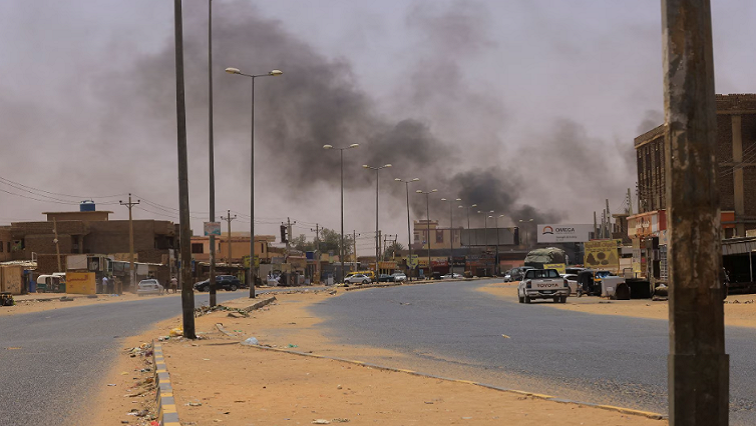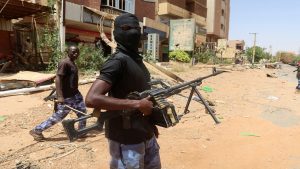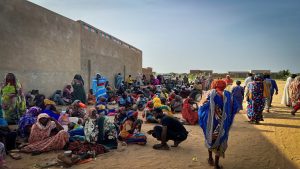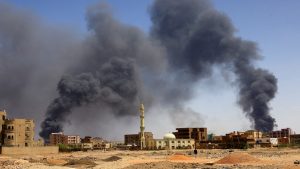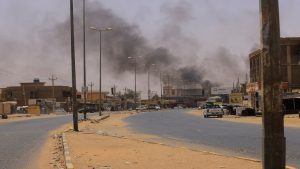When conflict engulfed Sudan’s capital last month, it quickly spread to the western Darfur region, reigniting an old conflict and sending a wave of refugees over the border into Chad.
Nasr Abdullahi sent his wife, sister and five children to Chad last week, staying behind to wait for news of a 17-year-old son in the capital Khartoum. But when his neighbour’s house was burned down and gangs took over the streets, he fled too.
“I couldn’t take it anymore, so I decided to leave on foot,” the 42-year-old said after arriving exhausted on Wednesday in the Chadian town of Adre, about 27km (17 miles) from El Geneina, the main city in West Darfur State.
“I crossed through the bush and walked west all night.”
Residents link the resurgence of violence in El Geneina and other parts of Darfur to the power struggle between Sudan’s army and paramilitary Rapid Support Forces (RSF) in Khartoum, which has allowed militias in the area to go unchecked.
Those interviewed by Reuters said the attacks since late April in El Geneina were carried out by “Janjaweed” militias, armed men usually thought to come from Arab nomadic tribes riding trucks, motorcycles and horses – the same militias from which the RSF was born.
The RSF denies instigating violence in Darfur, instead blaming the army.
The attacks in El Geneina have razed its markets, power grid and medical facilities, witnesses say, reviving memories of the atrocious violence that erupted in the early 2000s.
Sudan’s health ministry says up to 510 people have been killed in the city of about half a million. At least 250,000 people in West Darfur have been internally displaced while another 90,000 have fled to Chad.
With El Geneina’s communications now cut off, Abdullahi’s account offered a rare glimpse of the chaos.
“Heavy weapons and machine guns are being fired everywhere. When you go out in the morning, you see new bullet holes in the walls,” he said, adding that water supplies were cut and food was running scarce in the city he left.
Land conflict
The feared Janjaweed militias first gained power as the government used them against rebels in Darfur two decades ago. More than 300 000 people were killed and 2.5 million displaced.
The RSF emerged from them and grew into a large paramilitary force with legal status. Its commander, Mohamed Hamdan Dagalo, known as Hemedti, became deputy head of Sudan’s ruling council after helping topple former leader Omar al-Bashir during a popular uprising in 2019.
Though conflict in Darfur is often described along ethnic lines pitting Arab tribes against non-Arabs, it is also rooted in a struggle for land, intensified by climate change.
“This is between the herder and the farmer. It’s about resources and land,” said Sultan Saad Bahreldin, leader of the Masalit tribe, the largest bloc of El Geneina residents.
Arab livestock herders migrated to less arid areas during droughts in Darfur in the 1970s and 80s, causing tensions, said Jerome Tubiana, a researcher on the region.
They gained more land as the Janjaweed helped government forces drive back rebels in the conflict from 2003.
But they felt a 2020 peace deal with some rebel groups, which promised the return of displaced people to their land, ignored their needs. Attacks increased as international peacekeepers withdrew.
Five El Geneina residents, most preferring to remain anonymous to avoid retaliation, said by telephone – before lines went down – that they thought the militias aimed to empty the city and that the army had done little to offer protection.


